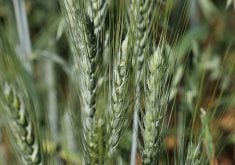Malting barley growers should have a steadily improving and profitable crop if they keep it in their rotations, industry leaders say.
“If you look at the costs of production and where the contracts are for malt barley this year, barley’s probably the second or third highest (returning) commodity,” said Pat Rowan, senior manager for Anheuser-Busch InBev’s BARI Canada.
“The maltsters are certainly all scouring for old crop and they’re contracting new crop.”
Barley’s slide in acreage and sagging popularity among farmers has caused much consternation.
Read Also

Government support for Canadian farmers has plummeted
Subsidies in Canada were 30 per cent of gross farm receipts in 1980s and are now around eight per cent
Traditional crops such as canola and spring wheat have seen bigger yield and profitability gains, while crops new to the region such as corn and soybean have made inroads in traditional barley-growing areas.
However, more investment in variety development and more aggressive contracting by buyers has increased the crop’s competitiveness with other choices.
A number of good-yielding two-row varieties have emerged that allow farmers to plant malting barley without thinking they will necessarily face a big yield drag compared to feed varieties, said Michael Brophy, president and chief executive officer of the Brewing and Malting Barley Research Institute.
“They are higher yielding than AC Metcalfe,” said Brophy.
“They can put more bushels in the bin.”
More available contracts and better yielding varieties should begin to reverse barley’s recent slide, he added.
ed.white@producer.com















